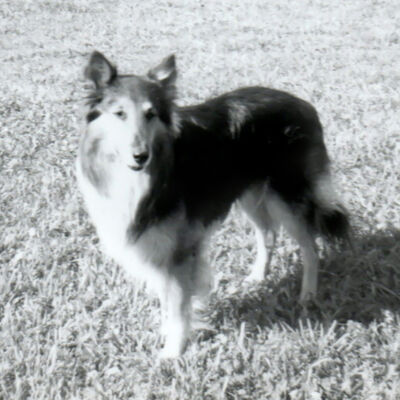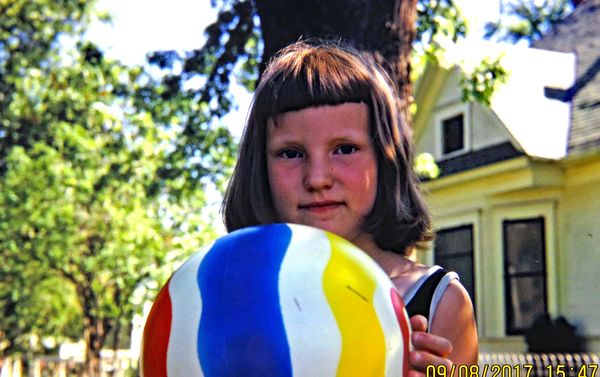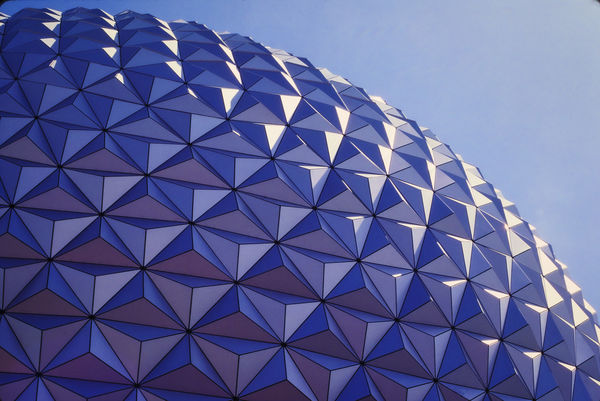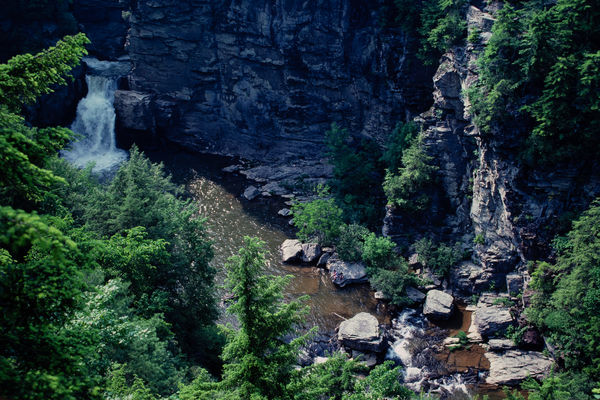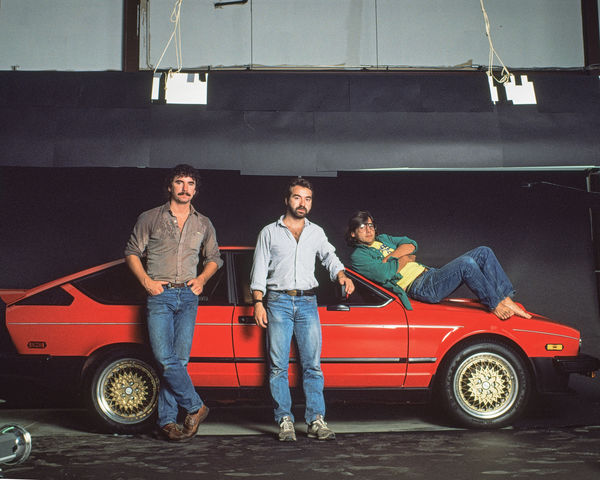Light source for converting slides to digital
Sep 12, 2020 10:10:56 #
MCHUGH
Loc: Jacksonville, Texas
As suggested a scanner is your best bet but if like me cost is always a factor, I make something to do a job with. What I have done to copy old slides and negatives. is make a holder for what I am coping and use an old flash unit with a piece of white paper to diffuse the light. The flash is the proper kelvin temp for correct color. When doing this with a digital camera you can see your exposure immediately and once it is set all will be good. I have an old slide copy attachment for my Nikon that does a great job and is what I use most of the time for slides and 35 mm negs. I use the other tech for 4x5 negatives. Hope this helps but as I said before a scanner is still your best bet.
Sep 12, 2020 10:40:22 #
I used a small electronic flash into a white box from the side. Another piece of white cardboard at 45 degrees and then a slide sized holder on the front. Trial and error for the exposure, but the light was constant and uniform and totally eliminated any camera movement.
Sep 12, 2020 11:07:06 #
John Ryberg wrote:
. . . Most sources say to use a daylight ( 5K - 6K) bulb or led.
Nothing is ever mentioned about the brightness or lumens needed to accurately reproduce the slide. Daylight bulbs I have seen range from 500 to 2000 lumens. If to dim the colors can't be seen and if to bright the colors will appear washed out.
Is there a correct brightness for this or is it just personal preference and trial-and-error?
Nothing is ever mentioned about the brightness or lumens needed to accurately reproduce the slide. Daylight bulbs I have seen range from 500 to 2000 lumens. If to dim the colors can't be seen and if to bright the colors will appear washed out.
Is there a correct brightness for this or is it just personal preference and trial-and-error?
John,
Your digital camera can easily give you the proper white balance regardless of whether you use a daylight or other light source. However, some LEDs and fluorescents do not give a complete light spectrum.
You might find bulbs which have a color temperature of daylight (in the neighborhood of 5000 K) but they may be weak in certain wavelengths. Sometimes this may work fine -- particularly if working with black and white -- but it may cause some unexplainable color shifts at odd times. You want a full-spectrum light source. Incandescent bulbs seem to be good, with proper white balance from the camera, so do electronic flash units.
The color of your light source can also be affected by how it is diffused. Opal glass or frosted plastic may have a filtering effect that slightly tints the color of the light. Same goes with bouncing the light source off of a "white" paper or painted surface. In camera white balance should correct this.
The intensity of the light affects your exposure and your working conditions. With electronic flash you control the exposure with the lens aperture and occasionally by changing the flash location or using neutral density filters. With LEDs or incandescent lights you can change your shutter speed as well.
The actual number of lumens is not critical. You can get the same results with 500 lumens or 2000 lumens-- depending on how far the light source is located from the slide you are copying, if the brighter source is farther away. I'd go with the less expensive ones. Higher lumens frequently means a hotter temperature. Try to avoid heat build up. It becomes uncomfortable for the photographer and can cause slides to slightly change shape as they warm up.
Since the original should be rigidly mounted, and not moving relative to the camera and lens, very long exposures are possible -- but using very dim bulbs makes it harder to focus, and when the exposure time gets over 20 seconds it getting into the realm of using a scanner. So, while a single candle is theoretically a possible light source, I'd save that option for use on a deserted island. On the other hand, very bright bulbs will give you eyestrain and a headache after staring into them for a few hours. I do not suggest using a slide projector as a light source for that reason.
Use the lowest ISO setting your camera has, to get the best image. You can adjust that, or adjust the distance of the light source to the original slide to tweek your exposure if you find an optimal lens aperture- which is usually f/8 --give or take a stop. With electronic flash exposures those may be your two exposure options. With continuous light you can change shutter speeds.
If you use electronic flash as your light source be sure to let the unit recycle completely between flashes, and give it a few extra seconds to cool down between flashes. You will also need need a secondary light source (a modeling light) to allow you to focus on the original. For best color, turn off the modeling light before using the flash for your exposure. If this affects autofocus, you may need to turn that off, too.
Sep 12, 2020 11:23:45 #
I have found the best light source for me for copying individual slides with your DSLR and a slide copier such as the Nikon ES-2 is a lume cube. Paste this link into your browser: https://lumecube.com/collections/shop-all/products/lume-cube-2
Lume cubes are small, powerful, and have 9 steps of increasing intensity. They also have a magnetically attachable white diffuser (they have a host of various diffusers available) and are 5000 K (daylight). They have several modes, are rechargeable, and have a tripod mount socket.
As someone said before, the intensity is not as much of an issue as you are going to set-up your camera as: manual mode, white balance = daylight, aperture = F8, ISO = the lowest setting available on your camera body, shutter speed = adjusted according to the exposure that you want (you should use a tripod). Remember, if your camera's light meter is zero'ed in to "proper exposure", it will be giving you the standard exposure for 18% gray. You may need to adjust the shutter speed or EV, up or down, to obtain the exposure that you want depending on how your slide was originally exposed.
When you are not using a lume cube for slide copying, you can use it for creative lighting. They are small and easily fit into your bag.
As a disclaimer, I have nothing to do with Lume Cube. I just like their products and carry several in my bag.
Lume cubes are small, powerful, and have 9 steps of increasing intensity. They also have a magnetically attachable white diffuser (they have a host of various diffusers available) and are 5000 K (daylight). They have several modes, are rechargeable, and have a tripod mount socket.
As someone said before, the intensity is not as much of an issue as you are going to set-up your camera as: manual mode, white balance = daylight, aperture = F8, ISO = the lowest setting available on your camera body, shutter speed = adjusted according to the exposure that you want (you should use a tripod). Remember, if your camera's light meter is zero'ed in to "proper exposure", it will be giving you the standard exposure for 18% gray. You may need to adjust the shutter speed or EV, up or down, to obtain the exposure that you want depending on how your slide was originally exposed.
When you are not using a lume cube for slide copying, you can use it for creative lighting. They are small and easily fit into your bag.
As a disclaimer, I have nothing to do with Lume Cube. I just like their products and carry several in my bag.
Sep 12, 2020 11:40:09 #
kymarto wrote:
Light intensity will make NO difference to the final result because you will adjust your camera settings for the correct exposure. However a brighter source will allow you to use lower ISO for less noise, a higher shutter speed to avoid shake and/or a, smaller aperture for more depth of field and better resolution.
Thank you, that is what I would want to know
Sep 12, 2020 12:09:14 #
John Ryberg wrote:
I have a lot of slides and also early 1900's black... (show quote)
I recently photographed well over 1000 old (1970-80's) slides using a homemade slide box and my NikonD5200. For a light source, I used and old cell phone that has a flashlight app on it. This worked great however I also used a light diffuser that I tore out of an old battery operated 1 slide previewer I found in with my old slides. I pressed the slide against the diffuser, with the light source behind the diffuser.
A few things I found helpful. I took all my pics in RAW format, something I rarely do for regular photos because modern camera's "generally" take great, fully editable jpgs. My slides varied from poor to midland so most needed lots of correction. Next, I used a cable release. Next, I used an extension tube to enable close up focus. Next, and this I found really useful, was I used an app that displayed the slide on my screen so I could preview before snapping the pic. I understand Lightroom has this feature, but I don't use light room.
This method worked quite good. The weak link was the quality of my slides, as they were from the beginning of my photography journey, and old camera's were much harder to use and learn than today's marvels. The value for me wasn't in photo quality as much as documenting old memories. I have scanned slides in before and that method pretty much sucked imo, took way too long and results were so-so, but I didn't have an expensive, dedicated scanner. I built my own device to hold the camera, slides and light box, but you could buy one pretty cheap, which I would recommend if your not pretty handy with building stuff.
I could scan slides pretty darn fast, the time was spent cropping, and developing the raw files.
My opinion is any led light source should work just fine, as long as you have a diffuser. I have since bought a really nice Skyroku zoomable led flashlight from an Amazon (on sale 2 for $8). It would be perfect for doing slides, and is really a nice light. They are 2 for $12 now, but a great deal and nice all around light. Most jpg editors will fix any problems with white balance, and raw editors actually are pretty easy to use for all types of photo enhancement stuff. I generally use my raw developer in Affinity Photo on all my jpgs as a starting point.
Sep 12, 2020 12:44:44 #
Isn't there a Nikon slide copying adaptor? I'm pretty sure I remember seeing something liuke that linked here.
Sep 12, 2020 13:20:42 #
There is...but you need the goth Nikon macro lens to go along with it...so you end up spending more unless you want a macro lens anyway. Now that I’m off the full time on the road RV lifestyle...I need to buy a slide scanner and scan the thousands of slides collected over my film days...although I think I will pull some of them out first to make sure they haven’t degraded too far to make it worthwhile. If they have...I will just do some selected ones and would send those out rather than buy a scanner...then fix them myself in PP or have the scanning vendor do them.
Sep 12, 2020 13:50:30 #
Amielee
Loc: Eastern Washington State
Fred Harwood wrote:
The light, whatever source, should not be directly behind the slide. Some diffuser, such as a plain piece of white paper, should be between the source and slide.
I used a old slide sorter that I have with an opague screen the slides set on. I placed a 6000K LED light bulb behind the slides and sorted out the ones to copy. I then placed the selected slide in the center of the screen and photographed it with a Canon SX 60 camera. I did not have a macro lens from my DSLR camera. I copied about 300 slides for my kids and sent them thumb drives with the photos on them. These slides are about 40 years old.
Sep 12, 2020 13:51:45 #
Buy a good scanner. And then learn how to use it. Scanning is not as easy as it looks. Practice a lot. They used to be some exceptional scanning programs.With a good scanner you can do a lot to bring out the best in your negatives and transparencies. Photographing them on a light table is ridiculous
Sep 12, 2020 14:21:52 #
Depending on how many slides / negatives you have, and their sizes should determine the approach.
If you have a lot and / or intend to do it for a long time, investing in a mid priced scanner (Epson 600 or better) makes a lot of sense. Copying with a camera can work very well too. I do both.
Once you master the scanner workflow, it can be very efficient.
If you use a camera , your light source must be a bit bigger than your largest negative or slide, even corner to corner, of a known full spectrum color temperature (5500k CRI 95 is a good place to start) and completely diffused. The brightness is important only for practical reasons, low ISO, f/5.6 -8, moderate shutter speed.
I piece of Flashed Opal glass makes a great surface and you can add secondary diffusion behind it.
You make masks from black paper for each film size so no raw light enters the lens to cause flare.
I do it on an old copy stand and have gotten great results.
If you have a lot and / or intend to do it for a long time, investing in a mid priced scanner (Epson 600 or better) makes a lot of sense. Copying with a camera can work very well too. I do both.
Once you master the scanner workflow, it can be very efficient.
If you use a camera , your light source must be a bit bigger than your largest negative or slide, even corner to corner, of a known full spectrum color temperature (5500k CRI 95 is a good place to start) and completely diffused. The brightness is important only for practical reasons, low ISO, f/5.6 -8, moderate shutter speed.
I piece of Flashed Opal glass makes a great surface and you can add secondary diffusion behind it.
You make masks from black paper for each film size so no raw light enters the lens to cause flare.
I do it on an old copy stand and have gotten great results.
Sep 12, 2020 14:22:19 #
Re: Scanners
The biggest issues with scanners are speed and focus. Many of the lesser flatbeds (under $1000) do not focus all films the same way, or accurately at all. This degrades the images from the get-go.
When you are scanning at high resolution for large prints, speed is an issue. 6400dpi scans take four times longer than 3200 dpi scans, which take four times longer than 800dpi scans... The native resolution of most flatbeds is 6400dpi, but the EFFECTIVE resolution is often around 2400dpi, so there is little advantage in scanning at a higher resolution.
Better slide duplication systems using a color-accurate light source, a good macro lens, and a 16 MP or higher resolution camera, can copy 35mm film very sharply.
The biggest challenge with film to digital duplication is dealing with dust and scratches. Older scanners came with Digital ICE, technology that removes much of the dust and many of the scratches. But if you clean your film meticulously, you will have a faster experience with digital duplication than with scanning.
Here are a couple of Kodachromes from the mid-1980s that were duplicated with a Lumix GH4, 30mm f/2.8 Lumix Macro lens, home-built rig, with an iPhone 7 Plus used as a light source (set to maximum brightness, Never Sleep, and plugged into a charger. I used electronic shutter mode and tripped the shutter with the timer. View in Download for best results. Be sure to notice the three people sitting on the rock on the river bank.
.
The biggest issues with scanners are speed and focus. Many of the lesser flatbeds (under $1000) do not focus all films the same way, or accurately at all. This degrades the images from the get-go.
When you are scanning at high resolution for large prints, speed is an issue. 6400dpi scans take four times longer than 3200 dpi scans, which take four times longer than 800dpi scans... The native resolution of most flatbeds is 6400dpi, but the EFFECTIVE resolution is often around 2400dpi, so there is little advantage in scanning at a higher resolution.
Better slide duplication systems using a color-accurate light source, a good macro lens, and a 16 MP or higher resolution camera, can copy 35mm film very sharply.
The biggest challenge with film to digital duplication is dealing with dust and scratches. Older scanners came with Digital ICE, technology that removes much of the dust and many of the scratches. But if you clean your film meticulously, you will have a faster experience with digital duplication than with scanning.
Here are a couple of Kodachromes from the mid-1980s that were duplicated with a Lumix GH4, 30mm f/2.8 Lumix Macro lens, home-built rig, with an iPhone 7 Plus used as a light source (set to maximum brightness, Never Sleep, and plugged into a charger. I used electronic shutter mode and tripped the shutter with the timer. View in Download for best results. Be sure to notice the three people sitting on the rock on the river bank.
.
Sep 12, 2020 14:24:15 #
John Ryberg wrote:
I have a lot of slides and also early 1900's black... (show quote)
Hi -
This is a copy of a Kodachrome slide that I did using the Nikon ES2 copying attachment mounted on my Nikon 60mm 2.8 AF-D. Shot with my D850. Light source was an old Balcar studio strobe with a defuser in front of it. I did shoot this tethered using Capture One so I was able to make my corrections while shooting. I did do some spot healing using Photoshop in post.
Originally I sent the slide out to a lab to have a drum scan done. The the $12 8 mp .jpg file that I got back was nowhere near the quality that I was able to get using a D850 and the ES2 and once set up it only took a minute or two for each slide I copied.
- FTn
Sep 12, 2020 16:21:29 #
therwol
Loc: USA
John Ryberg wrote:
I have a lot of slides and also early 1900's black... (show quote)
I don't recall anyone asking the format of the early 1900s black and white negatives. If they are in some large format, 4x5 or larger, you're going to have to spend a grand or more on a scanner if you go that route. (Epson V800 or V850 or less if you buy a used V700 or V750) As I think I mentioned, I've copied slides and negatives with both a camera and a scanner. I think that a scanner is the easier way to go and should give decent results. When you photograph negatives and slides, particularly if you want to get the most detail out of them, the light source is only one issue. Working at close distances like 1:1 or close to that requires meticulous attention to focus and alignment, and your equipment setup has to be rock solid to prevent any shifting if you touch the camera. In fact, I would recommend a remote release. The Nikon ES-2 adapter on the front of the right macro lens on the right camera simplifies things a great deal, but what camera and lens or lenses did you intend to use? It may not be an option. Here is a radical thought. If you just want to share some images with relativesto see who might be in them, then when it comes to slides, you can project them on a wall, snap some images, share them with your relatives and go from there.
Sep 12, 2020 16:47:16 #
burkphoto wrote:
Be sure to notice the three people sitting on the rock on the river bank.
.
.
You?? Relatives??
If you want to reply, then register here. Registration is free and your account is created instantly, so you can post right away.
